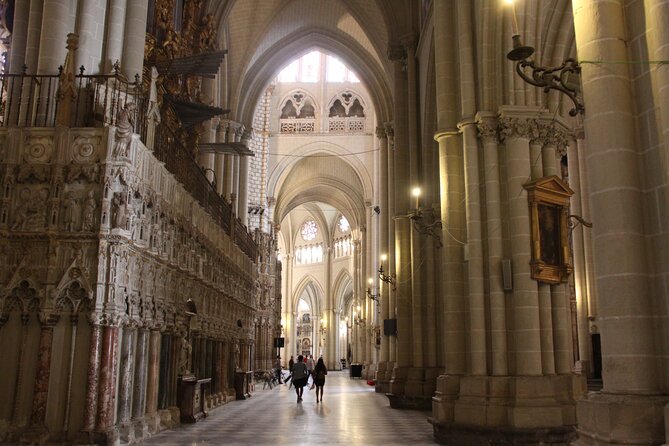Embarking on a stroll through Oslo unveils a city of intriguing contradictions. The fusion of old-world charm in Kvadraturen with the cutting-edge architecture of Bjørvika presents a captivating narrative of Oslo’s evolution. As you navigate the historic alleys of Grünerløkka and Gamlebyen, the city’s past whispers tales of resilience amidst the backdrop of modernity. The exploration of Oslo’s urban fabric promises a visual feast of contrasts waiting to be discovered, offering a glimpse into the harmonious coalescence of tradition and innovation that defines this dynamic city.
Key Points

- Experience Oslo’s blend of historic charm and modern architecture.
- Walk through Kvadraturen’s preserved 17th-century buildings.
- Explore the contemporary Opera House in the Bjørvika district.
- Discover Oslo’s eclectic neighborhoods, from medieval to avant-garde.
- Witness the city’s evolution through its diverse architectural styles.
Oslo’s Architectural Marvels

Set out on a journey through Oslo’s architectural marvels, where the city’s rich history and modern innovations blend seamlessly into a captivating urban landscape.
Oslo showcases a unique fusion of traditional Scandinavian design with cutting-edge contemporary architecture.
Explore historic neighborhoods like Kvadraturen, known for its well-preserved buildings from the 17th and 18th centuries.
Witness the transformation of Oslo’s Bjørvika district into a cultural hub, exemplified by the striking modern Opera House. This architectural gem, with its sloping white marble roof that doubles as a public space, offers a glimpse into Norway’s architectural prowess.
From medieval structures to avant-garde designs, Oslo’s architectural diversity reflects the city’s journey from past to present, making it a must-visit for architecture enthusiasts.
The Modern Opera House Experience

Exploring the modern Opera House in Oslo offers visitors a captivating experience that seamlessly blends contemporary architecture with cultural significance. Designed by Snøhetta and opened in 2008, this iconic landmark stands as a representation of Norway’s dedication to the arts.
The building’s sleek lines and white marble exterior reflect the surrounding waters of the Oslo Fjord, creating a harmonious connection with the city’s natural elements. Visitors can wander on the Opera House’s roof, offering panoramic views of the city and a unique perspective on Oslo’s urban landscape.
Inside, the main auditorium’s acoustics are renowned worldwide, hosting a variety of opera, ballet, and musical performances throughout the year. The modern Opera House stands as a testament to Oslo’s commitment to both architectural innovation and artistic expression.
Transformation of Bjørvika District
The evolution of the Bjørvika district in Oslo showcases a dynamic blend of cultural revitalization and urban development. This area has undergone significant changes, transitioning from an industrial zone to a vibrant cultural hub. Below is a table illustrating key aspects of the transformation:
| Aspect | Description |
|---|---|
| Architectural Design | Incorporates modern and innovative structures |
| Cultural Institutions | Hosts museums, galleries, and performance venues |
| Sustainability | Embraces eco-friendly practices and green spaces |
| Community Engagement | Encourages local participation and events |
Through a thoughtful combination of architectural innovation, cultural richness, sustainable practices, and community involvement, the Bjørvika district has truly transformed into a dynamic and thriving part of Oslo.
Historic Neighborhood Exploration
Unveiling the rich history embedded in Oslo’s charming neighborhoods provides a captivating journey through the city’s past and cultural heritage.
As you explore these historic neighborhoods, such as Gamlebyen (Old Town) and Damstredet, you will encounter cobblestone streets lined with well-preserved wooden houses dating back to the 17th and 18th centuries.
Witness the fusion of past and present as you stroll past Akershus Fortress, a medieval castle overlooking the Oslo Fjord, and then meander through Grünerløkka, a trendy district filled with 19th-century industrial architecture repurposed into hip cafes and boutiques.
The historic neighborhoods of Oslo offer a glimpse into the city’s evolution from its humble beginnings to the vibrant metropolis it is today.
Blend of Past and Present

Explore Oslo’s urban landscape to witness the seamless blend of historical charm with contemporary innovation. The city’s ability to intertwine its rich past with modern elements creates a captivating experience for visitors.
Here are four aspects that highlight Oslo’s unique mix of past and present:
-
Historic Architecture:
Stroll through the city streets and admire the well-preserved historical buildings that stand alongside sleek modern structures. -
Cultural Institutions:
Explore museums and galleries housed in traditional buildings, showcasing a juxtaposition of old and new art forms. -
Public Spaces:
Enjoy parks and squares that have been revitalized with modern design features while retaining their historical significance. -
Urban Planning:
Witness how urban planners have integrated historical landmarks into contemporary city planning, creating a harmonious coexistence of past and present.
Kvadraturen Area Visit

Set out on a guided exploration of Oslo’s historic Kvadraturen area to uncover its architectural treasures and rich cultural heritage.
This area, known as Oslo’s oldest neighborhood, is a vibrant mix of historic buildings, modern shops, and bustling streets. Marvel at the well-preserved 17th-century architecture, including iconic landmarks like Oslo Cathedral and Christiania Torv square.
As you stroll through the cobblestone streets, you’ll encounter charming cafes, boutique shops, and galleries showcasing local art. Don’t miss the opportunity to learn about the area’s fascinating history, from its origins as a planned city by King Christian IV to its present-day role as a hub for culture and commerce.
Explore Kvadraturen with an experienced guide to truly appreciate the beauty and significance of this unique district.
Starting Point: Oslo Visitor Center

The starting point for the Oslo City Walks tour is the Oslo Visitor Center, where participants gather before setting off on a journey through the city’s captivating sights and history. Here’s what you can expect at the starting point:
- Information Hub: The Visitor Center provides maps, brochures, and expert advice to enhance your exploration.
- Guided Briefing: Knowledgeable guides offer insights into Oslo’s rich heritage and the tour itinerary.
- Meeting Point: A designated area where fellow travelers convene to kick off the walking tour.
- Safety Instructions: Essential guidelines are shared to ensure a smooth and secure experience while exploring the city.
Prepare to learn about Oslo’s contrasting charms as you embark on this enlightening journey from the Oslo Visitor Center.
End Point: Deichman Bjørvika Library
Upon completing the Oslo City Walks tour, you will arrive at the vibrant cultural hub of Deichman Bjørvika Library, the endpoint of this enriching exploration through Oslo’s architectural and historical treasures.
As the largest public library in all of Scandinavia, Deichman Bjørvika stands as a modern architectural marvel, blending seamlessly with the historic surroundings of Oslo’s waterfront. Visitors can enjoy a world of knowledge and creativity within its innovative spaces, which offer not only an extensive collection of books but also host various cultural events, exhibitions, and workshops.
The library’s design reflects Oslo’s commitment to sustainability and accessibility, making it a symbol of the city’s forward-thinking approach to education and culture. A visit to Deichman Bjørvika truly encapsulates the fusion of tradition and modernity that defines Oslo’s dynamic essence.
Frequently Asked Questions
Is Transportation Provided to the Starting Point?
Transportation to the starting point is not provided for the Oslo City Walks – The City of Contrasts tour. Participants should plan their own means of arriving at the Oslo Visitor Center for the 05:00 pm start time.
Are Snacks or Drinks Included During the Walk?
Snacks or drinks are not included during the walk. Guests are advised to bring their own refreshments. The focus of the tour is on exploring Oslo’s architectural sights, historical neighborhoods, and the transformation of key districts.
Are There Restrooms Along the Walking Route?
Restrooms are available along the walking route to ensure convenience for participants. Access to facilities is strategically planned to accommodate the group’s needs. This consideration enhances the overall experience by providing necessary amenities during the tour.
Is There a Guide Providing Commentary During the Walk?
Yes, there is a knowledgeable guide who provides engaging commentary throughout the walk. This expert will offer insights into Oslo’s history, architecture, and culture, enriching your experience as you explore the city’s contrasting past and present.
Can Children Participate in the City Walk?
Children are welcome to participate in the city walk, provided they meet the moderate physical fitness level required. The tour accommodates a maximum of 20 travelers, ensuring an enjoyable and engaging experience for all participants.
Recap
Experience the captivating city walks in Oslo to witness the harmonious blend of traditional Scandinavian design and modern innovation.
From the historic buildings in Kvadraturen to the contemporary cultural institutions in Bjørvika, Oslo’s architectural marvels showcase the city’s evolution from the past to the present.
Explore the contrasting styles and periods of Oslo’s architecture, and learn about the unique charm of this vibrant metropolis.






